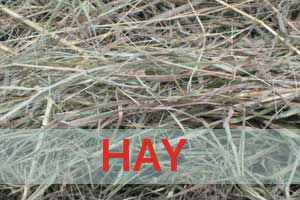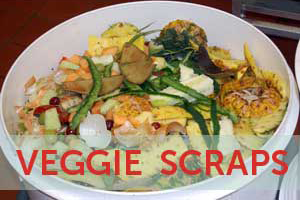How to make good compost
Buy a compost bin or make one yourself
There are many kinds of containers that are suitable for making compost. Commerically made plastic bins do the job well enough if you don't have a huge amount of material. Plastic compost bins are great at keeping rodents and other animals out of your compost. Plastic bins can pose a problem if you have a lot of material to compost. They can also make things more difficult when it comes to turning your compost. Making your own homemade compost bin may be worthwhile if you're serious about composting.
How to determine the right compost mixture
Compost materials can be separated into two types, brown carbon rich materials and green nitrogen rich materials. Here are some examples:


Brown Compost Materials
- Leaves
- Hay and Straw
- Paper and Cardboard
- Woody tree and shrub prunings
- eggshells
- tea bags
- corn cobs
- sawdust
Green Compost Materials
- vegetables and fruit
- grass clippings
- fresh manure
- coffee grounds
- young hedge trimmings
- seaweed
- feathers
- plant cuttings
- hair
Do not add:
- human feces
- meat and animal fats
- weeds with mature seeds and plants with invasive root systems
- pressure treated wood
- plastic
- plywood
- cat litter
- metals
- glass
- other non-organic materials
How to make a compost pile
Learning how to make compost is easy. First, turn the soil over in the area where you will put your compost bin. Choose a sunny, well drained spot that is easy to reach from your house. Then cover the bottom of the compost bin with a few inches of branches, twigs or other loose organic material that will allow for good air circulation. Then you can start adding your material.
The ideal mixture of material is a carbon (brown) to nitrogen (green) ratio of about 30 to 1. Getting that magic ratio can be tricky so here is a much simpler method that we have found to be very effective. Start by adding a 3 inch layer of brown material on top of the sticks and twigs. Collect extra brown material, such as fall leaves and keep it in a container or a bag next to the compost bin. If the brown material is very dry you can moisten the layer lightly but sparingly. Adding too much moisture is one of the most common mistakes people make when making a compost pile.
Then add 2 inch layer of green material on top of the brown material and cover it with a thin layer of good garden soil or some finished compost (this is optional but it acts as an accelorator and helps to keep flies and other unwanted critters away). Keep adding new layers, alternating between green and brown until the bin is nearly full.
Turn your compost over with a shovel or garden fork about once a week to aerate the pile. Getting some oxygen into the center of the pile activates the beneficial organisms and helps your compost to break down more quickly and evenly.
Check the compost for moisture. It should feel like a damp sponge but shouldn't release any water when squeezed. Add some water if it seems too dry.
Keep turning the mixture until is mostly broken down and is dark, crumbly and smells rich and earthy.
How and when to add finished compost to your garden
Acheiving the correct moisture content is an important factor in keeping a compost pile working efficiently.
It can take anywhere from a few weeks to about a year for your compost to be ready to use. The time it takes depends on the materials you used, how often you turned the pile and the ratio of greens to browns. Be careful not to use your compost too early. Unfinished compost can burn some plants and can prevent some seeds from germinating effectively. If in doubt, test a small amount in a limited area before applying to the entire planting area. When using partially unfinished compost, leave a space fo a few inches between the compost and the stems of plants to prevent burning.
 Australian Dollars
Australian Dollars
 US Dollars
US Dollars
 European Euros
European Euros
 New Zealand Dollars
New Zealand Dollars
